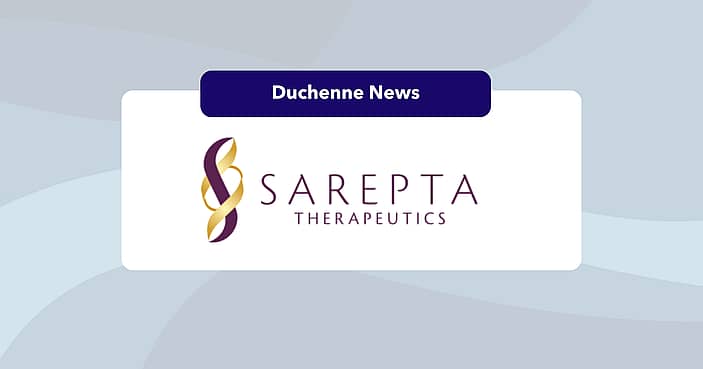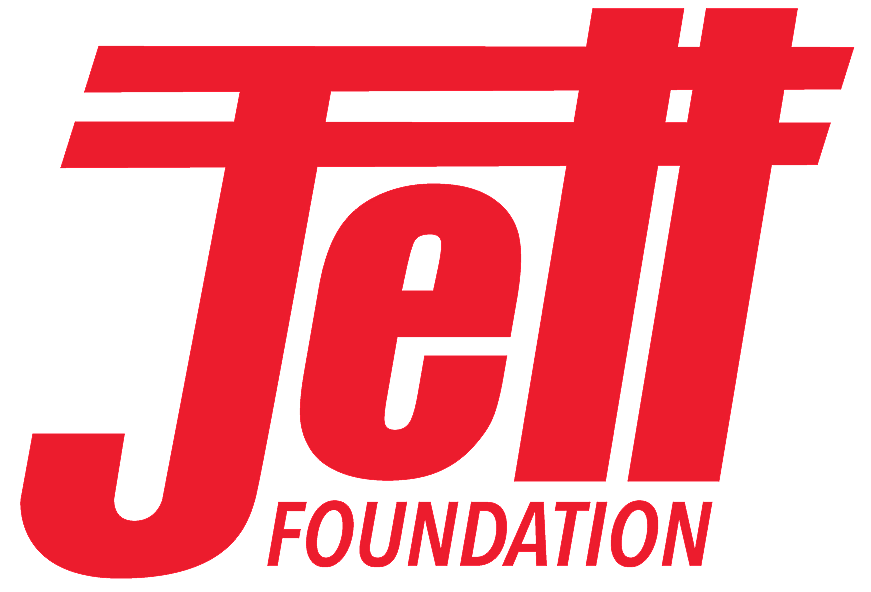
On Monday, Janbuary 29, Sarepta Therapeutics announced positive data from Part B of the MOMENTUM study (Study SRP-5051-201), a global, Phase 2, multi-ascending dose clinical trial of SRP-5051 (vesleteplirsen) that enrolled patients aged 8 to 21 years.
Please continue reading to view their full press release.
CAMBRIDGE, Mass.–(BUSINESS WIRE)–Jan. 29, 2024– Sarepta Therapeutics, Inc. (NASDAQ:SRPT), the leader in precision genetic medicine for rare diseases, today announced positive data from Part B of the MOMENTUM study (Study SRP-5051-201), a global, Phase 2, multi-ascending dose clinical trial of SRP-5051 (vesleteplirsen) that enrolled patients aged 8 to 21 years. SRP-5051 is a next-generation peptide phosphorodiamidate morpholino oligomer (PPMO) treatment for patients with Duchenne muscular dystrophy who are amenable to exon 51 skipping.
Data from Part B of MOMENTUM found that at the higher, target dose, approximately 30 mg/kg dosed every four weeks, SRP-5051 resulted in mean dystrophin expression of 5.17%, and mean exon skipping of 11.11% at 28 weeks (n=20). Consistent dystrophin expression was seen in ambulatory (4.76%, n=11) and non-ambulatory (5.67%, n=9) participants at 28 weeks. Hypomagnesemia has previously been identified in patients taking SRP-5051 and was managed and monitored through prophylactic magnesium supplementation as part of the study protocol.
“SRP-5051 dosed every four weeks is showing substantially higher increases in dystrophin and exon skipping compared to eteplirsen dosed weekly,” said Louise Rodino-Klapac, Ph.D., executive vice president, chief scientific officer and head of research and development, Sarepta Therapeutics. “The data suggest a favorable benefit-risk profile for SRP-5051 and we look forward to discussing the results and next steps with FDA. As the leader in Duchenne, Sarepta is committed to advancing meaningful treatments for those with Duchenne and other rare diseases where there is unmet need.”
High dose results at 28 weeks (~30 mg/kg, dosed every four weeks, n=20):
- 5.17% mean dystrophin expression as measured by western blot
- 4.53% mean change from baseline, P < 0.0001
- Mean exon skipping of 11.11%, as measured by digital drop polymerase chain reaction (ddPCR), and a mean change from baseline in exon skipping of 10.07%
- The changes from baseline represent a 12.2-fold increase in dystrophin expression and a 24.6-fold increase in exon skipping compared to a weekly 30 mg/kg dose of eteplirsen at 24 weeks (mean dystrophin expression of 0.82%, mean exon skipping of 0.59%, n=16).
Low dose results at 28 weeks (~20 mg/kg, dosed every four weeks, n=20):
- 2.81% mean dystrophin expression as measured by western blot
- 1.60% mean change from baseline, P= 0.0012
- Mean exon skipping of 2.47%, as measured by ddPCR, and a mean change from baseline in exon skipping of 2.00%
- The changes from baseline represent a 4.3-fold increase in dystrophin expression and a 4.9-fold increase in exon skipping compared to a weekly 30 mg/kg dose of eteplirsen at 24 weeks.
“The dystrophin production delivered by SRP-5051 in the MOMENTUM study is very encouraging. Importantly, with effective supplementation and monitoring, we have not seen additional complications from the hypomagnesemia,” said Eugenio Mercuri, M.D., Ph.D., head of the Neuromuscular Unit, Catholic University, Rome, Italy, and an investigator in the study. “The results with SRP-5051 to date suggest it could play an important role in the treatment of Duchenne patients with a confirmed exon 51-amenable mutation.”
There were seven serious, treatment-emergent adverse events in MOMENTUM Part B, four serious events of hypomagnesemia and three serious cases of hypokalemia. Hypomagnesemia has been seen in earlier clinical studies of SRP-5051 and, throughout MOMENTUM Part B, supplemental magnesium was administered prophylactically. No treatment-related discontinuations occurred in the study.
Conference call details
At 8:30 a.m. Eastern time on Jan. 29, 2024, Sarepta will host a conference call and webcast to discuss the results.
The event will be webcast live under the investor relations section of Sarepta’s website at https://investorrelations.sarepta.com/events-presentations and following the event a replay will be archived there for one year. Interested parties participating by phone will need to register using this online form. After registering for dial-in details, all phone participants will receive an auto-generated e-mail containing a link to the dial-in number along with a personal PIN number to use to access the event by phone.
About SRP-5051 (vesleteplirsen)
SRP-5051 is an investigational agent using Sarepta’s PPMO chemistry and exon-skipping technology to skip exon 51 of the dystrophin gene. SRP-5051 is designed to bind to exon 51 of dystrophin pre-mRNA, resulting in exclusion of this exon during mRNA processing in patients with genetic mutations that are amenable to exon 51 skipping. Exon skipping is intended to allow for production of an internally shortened dystrophin protein. PPMO is Sarepta’s next-generation chemistry platform designed around a proprietary cell-penetrating peptide conjugated to the PMO backbone, with the goal of increasing tissue penetration, increasing exon skipping, and significantly increasing dystrophin production. Around 13% of Duchenne patients have mutations that make them amenable to skipping exon 51. If successful, the PPMO offers the potential for improved efficacy and less frequent dosing for patients.
About MOMENTUM (Study SRP-5051-201)
MOMENTUM is a global, Phase 2, multi-arm, ascending dose study of SRP-5051, infused every four weeks, and will assess dystrophin protein levels in skeletal muscle tissue following SRP-5051 treatment. The study will also assess safety and tolerability. Part B enrolled 40 participants, both ambulant and non-ambulant, between the ages of 8 to 21 at sites in the U.S., Canada, and Europe.
More information can be found on www.clinicaltrials.gov.
About EXONDYS 51
EXONDYS 51 (eteplirsen) uses Sarepta’s proprietary phosphorodiamidate morpholino oligomer (PMO) chemistry and exon-skipping technology to bind to exon 51 of dystrophin pre-mRNA, resulting in exclusion, or “skipping”, of this exon during mRNA processing in patients with genetic mutations that are amenable to exon 51 skipping. Exon skipping is intended to allow for production of an internally truncated dystrophin protein.
EXONDYS 51 is indicated for the treatment of Duchenne muscular dystrophy in patients who have a confirmed mutation of the dystrophin gene that is amenable to exon 51 skipping.
This indication is approved under accelerated approval based on an increase in dystrophin production in skeletal muscle observed in some patients treated with EXONDYS 51. Continued approval may be contingent upon verification of a clinical benefit in confirmatory trials.
EXONDYS 51 has met the full statutory standards for safety and effectiveness and as such is not considered investigational or experimental.
Important Safety Information About EXONDYS 51
Hypersensitivity reactions, bronchospasm, chest pain, cough, tachycardia, and urticaria have occurred in patients who were treated with EXONDYS 51. If a hypersensitivity reaction occurs, institute appropriate medical treatment and consider slowing the infusion or interrupting the EXONDYS 51 therapy.
Adverse reactions in Duchenne patients (N=8) treated with EXONDYS 51 30 mg or 50 mg/kg/week by intravenous (IV) infusion with an incidence of at least 25% more than placebo (N=4) (Study 1, 24 weeks) were (EXONDYS 51, placebo): balance disorder (38%, 0%), vomiting (38%, 0%) and contact dermatitis (25%, 0%). The most common adverse reactions were balance disorder and vomiting. Because of the small numbers of patients, these represent crude frequencies that may not reflect the frequencies observed in practice. The 50 mg/kg once weekly dosing regimen of EXONDYS 51 is not recommended.
The following adverse reactions have been identified during observational studies that were conducted as part of the clinical development program and continued post approval.
In open-label observational studies, 163 patients received at least one intravenous dose of EXONDYS 51, with doses ranging between 0.5 mg/kg (0.017 times the recommended dosage) and 50 mg/kg (1.7 times the recommended dosage). All patients were male and had genetically confirmed Duchenne muscular dystrophy. Age at study entry was 6 months to 19 years. Most (85%) patients were Caucasian.
The most common adverse reactions from observational clinical studies (N=163) seen in greater than 10% of the study population were headache, cough, rash, and vomiting.
For further information, please see the full Prescribing Information.
About Sarepta Therapeutics
Sarepta is on an urgent mission: engineer precision genetic medicine for rare diseases that devastate lives and cut futures short. We hold leadership positions in Duchenne muscular dystrophy (DMD) and limb-girdle muscular dystrophies (LGMDs), and we currently have more than 40 programs in various stages of development. Our vast pipeline is driven by our multi-platform Precision Genetic Medicine Engine in gene therapy, RNA and gene editing. For more information, please visit www.sarepta.com or follow us on Twitter, LinkedIn, Instagram and Facebook.
Internet Posting of Information
We routinely post information that may be important to investors in the ‘For Investors’ section of our website at www.sarepta.com. We encourage investors and potential investors to consult our website regularly for important information about us.
Forward-Looking Statements
In order to provide Sarepta’s investors with an understanding of its current results and future prospects, this press release contains statements that are forward-looking. Any statements contained in this press release that are not statements of historical fact may be deemed to be forward-looking statements. Words such as “believes,” “anticipates,” “plans,” “expects,” “will,” “may,” “intends,” “prepares,” “looks,” “potential,” “possible” and similar expressions are intended to identify forward-looking statements. These forward-looking statements include statements relating to our future operations, financial performance and projections, business plans, market opportunities, priorities and research and development programs and technologies; the potential benefits of our technologies and scientific approaches; the potential benefits of SRP-5051, including its potential for higher dystrophin and exon-skipping than eteplirsen and a favorable benefit-risk profile, including that hypomagnesemia is manageable; and plans and milestones, including discussing results and next steps with FDA.
These forward-looking statements involve risks and uncertainties, many of which are beyond Sarepta’s control. Actual results could materially differ from those stated or implied by these forward-looking statements as a result of such risks and uncertainties. Known risk factors include the following: success in preclinical and clinical trials, especially if based on a small patient sample, does not ensure that later clinical trials will be successful, and the results of future research may not be consistent with past positive results or may fail to meet regulatory approval requirements for the safety and efficacy of product candidates; certain programs may never advance in the clinic or may be discontinued for a number of reasons, including regulators imposing a clinical hold and us suspending or terminating clinical research or trials; if the actual number of patients suffering from the diseases we aim to treat is smaller than estimated, our revenue and ability to achieve profitability may be adversely affected; because we are developing product candidates for the treatment of certain diseases in which there is little clinical experience and we are using new endpoints or methodologies, there is increased risk that the FDA, the EMA or other regulatory authorities may not consider the endpoints of our clinical trials to provide clinically meaningful results and that these results may be difficult to analyze; we may not be able to execute on our business plans, including meeting our expected or planned regulatory milestones and timelines, research and clinical development plans, and bringing our product candidates to market, for various reasons, some of which may be outside of our control, including possible limitations of company financial and other resources, manufacturing limitations that may not be anticipated or resolved for in a timely manner, and regulatory, court or agency decisions, such as decisions by the United States Patent and Trademark Office with respect to patents that cover our product candidates; and those risks identified under the heading “Risk Factors” in our most recent Annual Report on Form 10-K for the year ended December 31, 2022 and our most recent Quarterly Report on Form 10-Q filed with the Securities and Exchange Commission (SEC) as well as other SEC filings made by the Company which you are encouraged to review.
View source version on businesswire.com: https://www.businesswire.com/news/home/20240129970075/en/
Investor:
Ian Estepan, 617-274-4052
iestepan@sarepta.com
Media:
Tracy Sorrentino, 617-301-8566
tsorrentino@sarepta.com
Source: Sarepta Therapeutics, Inc.






